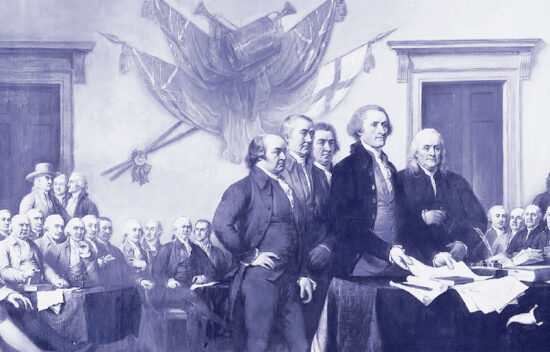
Rights, Equality, and Citizenship
85 min
- Background Essay: Rights, Equality, and Citizenship
- Handout A: What Kind of Right?
- Handout B: Equality Quotes
- Appendix A: Amending the Constitution
- Appendix B: Timeline and Quotes
- Appendix C: Timeline Cards
- Appendix G: Pathway for Change
- Answer Key
- suffrage
- democratic
- republican
- renounce
- coverture
- poll tax
FOR FURTHER READING
Flexner, Eleanor, Mary Wollstonecraft: A Biography, Coward, McCann, & Geoghegan, Inc. (1972)
- Distribute Handout A: What Kind of Right? or read it aloud and have students respond to each statement with a show of hands. As you go, refer to the background essay discussion of natural rights as part of our human nature, and not a gift of the government. These rights are also called negative rights because they can be exercised without anyone else acting on our behalf.
- Continue until you have completed all 15 items, clarifying any misconceptions as you go. See the Answer Key for some clues that the privileges (or rights conferred by civil society) listed are not natural rights.
- Conclude by asking, “What about voting? Is voting a natural right, a privilege, or neither?” Allow some discussion for a few moments.
Activity I » 15 min.
- Have students work in small groups. Distribute Handout B: Equality Quotes and tell students they should first individually analyze the quotes and mark whether each reflects a commitment to equality for women, and then briefly discuss their answers within their small groups.
- Next, conduct a whole-class discussion in which you provide the source information (from the Answer Key) for students to fill in on their charts and ask if anything surprises them or causes them to change their minds about the quotes. Allow students to share observations.
- Have students complete the Handout B Comprehension and Reflection Questions in their small groups and ask what characteristics writers in each category had in common.
- At this point, provide students with Appendix G: A Pathway for Change and introduce the driving question: How does one carry out long-term change in order to better align institutions with principles of liberty, justice, and equality within a constitutional order? Spend a few moments previewing the graphic organizer. Note that students should keep this document in their folders and expect to refer to it frequently. Based on their discussion of Handout B: Equality Quotes, and considering the status of women at the American Founding, where do students think that American women were in the Pathway by 1800?
Activity II » 20 min.
- Write on the board the following two pairs of questions:
- Is suffrage a right or a privilege? Is suffrage necessary for a person to be considered a citizen?
- Is legal equality necessary for liberty? Can a person be free if not equal under the law?
- Divide the class into four large groups (subdividing if your class is large), assigning each group to respond with arguments supporting the following positions:
- Group A: Suffrage is a privilege that is NOT necessary for a person to be considered a citizen.
- Group B: Suffrage is a right necessary for a person to be considered a citizen.
- Group C: Equality is necessary for liberty.
- Group D: Equality is NOT necessary for liberty.
- Have them work in their groups to develop their arguments, perhaps in spite of what may be their personal beliefs.
- After about 10 minutes, have each group designate a speaker to explain their best arguments to the class.
- Debrief as time allows, offering as a prompt the way both Locke and Samuel Adams begin with the proposition that all people are born free, and are equal in this natural freedom. Note: This may be a good time to point out how the use of the term “man” in this context means all people. It has fallen out of fashion to use a masculine term to include both males and females, but at the time Locke and Adams were writing, their audiences would have understood the term “man” to encompass all human beings.
Activity III » 10 min.
- Read aloud from the last paragraph of Background Essay: Rights, Equality, and Citizenship, or ask students to reread it silently. Ask them to brainstorm other groups in American history who have gained greater legal equality over time.
- Have students complete Appendix A: Amending the Constitution, and answer the reflection questions:
- How democratic is the amendment process in Article V of the U.S. Constitution?
- List some pros and cons for democratic participation in the amendment process. Why do you think the Framers made the amendment process somewhat difficult?
- How would you evaluate the importance of the right of suffrage for those living under this Constitution? Encourage students to incorporate ideas from class discussion into their responses.
- Ask students to journal for a few minutes regarding to what extent this lesson has helped them develop a context and set the stage to learn about the movement for women’s equality and suffrage.
- As a class, place each of the Appendix C: Timeline Cards on your class timeline.
- As students work with the timeline cards, encourage them to discuss the historical significance of the events. For example, you might challenge them to decide which of the constitutional amendments included in Lesson 1 was the most significant in promoting constitutional principles and civic virtue.


